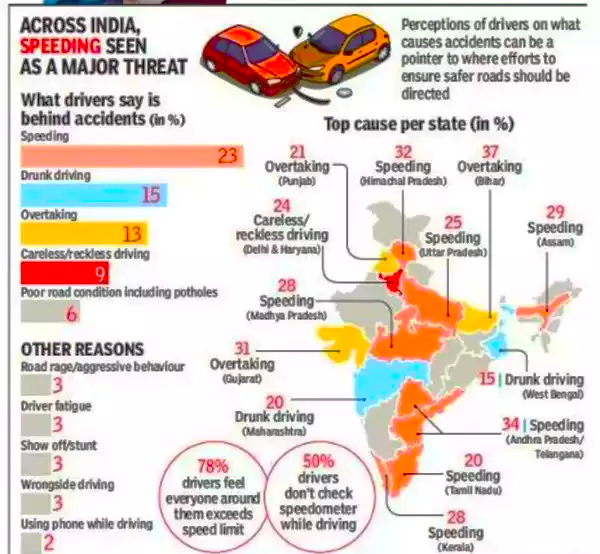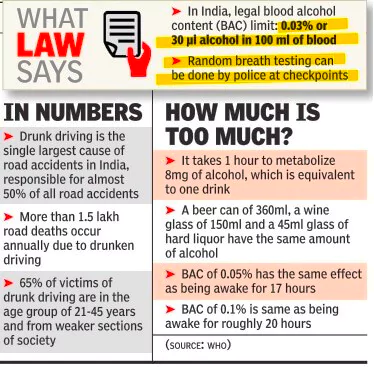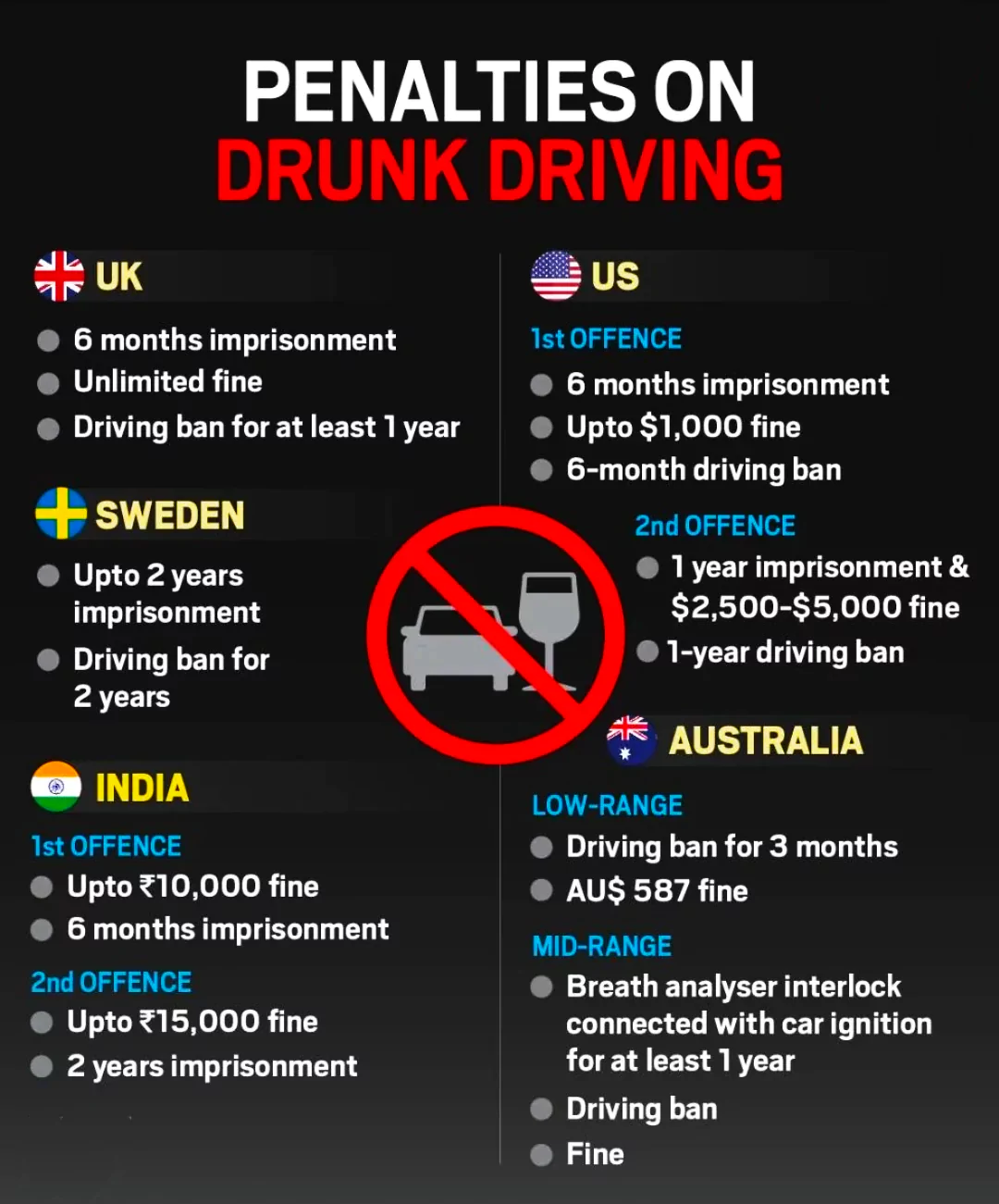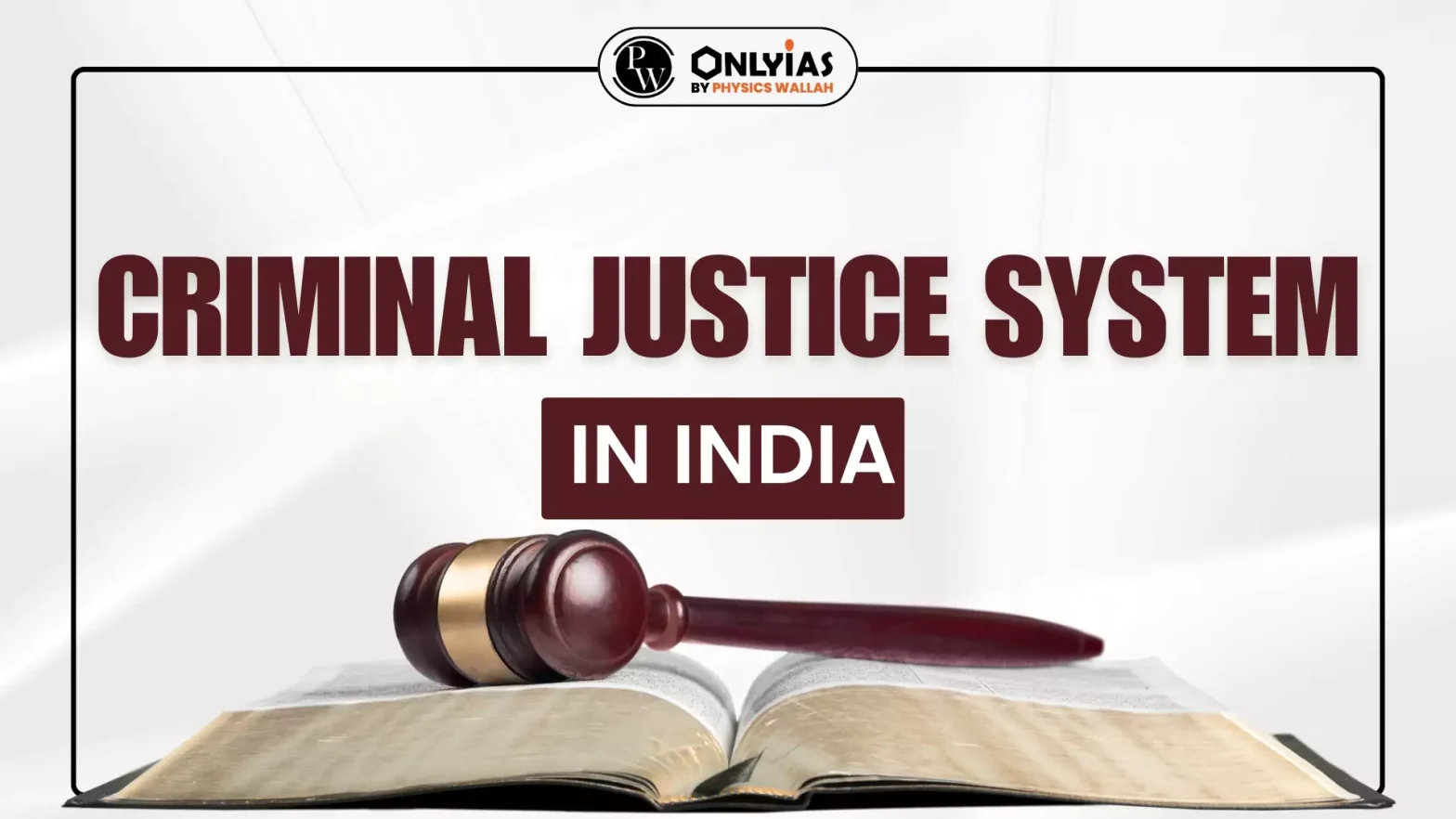Context
Recently, a 17-year-old boy released on bail granted by a Pune court within 15 hours of being detained for allegedly running over two people by his over-speeding Porsche car has left many baffled.
Speeding Porsche Incident Exposes Flaws in Criminal Justice System in India and Road Safety Crisis
- This incident brings to light how the maximum number of road accidents and deaths in the country occur due to drink-driving.
- It also highlights issues in the criminal justice system in India, delays in trials and inadequate handling of juvenile offenders, calling for speedy and effective justice reforms.
Enroll now for UPSC Online Course
About Criminal Justice System in India
- Deals With: India’s Criminal Justice System is based on the Indian Penal Code (IPC), which was enacted in 1860. This code lays down the laws and procedures that govern criminal activities in the country.
- Lord Thomas Babington Macaulay shaped India’s criminal laws during British rule and is often regarded as the chief architect of the codification of criminal laws in India.
- Components: The Criminal Justice System in India is composed of the police, the judiciary, and the correctional system.
- Police: These are the first point of contact for those affected by crime, and are responsible for investigating and apprehending criminals.
- Judiciary: It is responsible for delivering justice through trials and sentencing.
 Correctional System: It is responsible for rehabilitating offenders and ensuring that they do not re-offend.
Correctional System: It is responsible for rehabilitating offenders and ensuring that they do not re-offend.
- Purpose:
- Justice Delivery: To ensure that justice is served and to ensure that the guilty are punished and that those who have been wronged are compensated.
- Serving Security: It provides a sense of security to the public, as criminals are brought to justice.
- It also serves as a deterrent to crime, as offenders are held accountable for their actions.
- Protection of Rights: It is also responsible for protecting the rights of the accused and providing victims with justice. To ensure that those accused of criminal activities are treated fairly and that they are given their due rights.
- It strives to ensure that the interests of society are safeguarded and that the public is protected from criminal activities.
- Mandate: The Criminal Justice System is responsible for ensuring that offenders are brought to justice and that victims are provided with justice.
- The system also ensures that those accused of criminal activities are treated fairly and are given their due rights.
- Provision of Punishment: The Criminal Justice System in India provides punishments in accordance with the IPC. The types of punishments meted out by the criminal justice system vary depending on the severity of the crime. Generally, punishments can be divided into three main categories: imprisonment, fines, and capital punishment.
- Imprisonment: It is the most common form of punishment and is used as a means of reformation and rehabilitation for offenders.
- Fines: These are also a form of punishment and are imposed on offenders in order to deter them from committing further offences.
- Capital Punishment: It is reserved for the most serious crimes such as murder and rape.
- It is a controversial form of punishment, and is seen by some as a cruel and unusual form of punishment.
Committees associated with Reforming the Criminal Justice System in India:
- Vohra Committee, 1993: It recommended that an institution be set up to effectively deal with the issues of the Criminal Justice System by collecting intelligence from various sources and taking appropriate actions.
- Malimath Committee, 2003: It made various recommendations to deal with the issues of the Criminal Justice System, such as introducing a new category of offences called ‘social welfare offences’ for minor violations that can be dealt with by imposing fines or community service.
- Madhav Menon Committee, 2007: It was set up to draft a national policy on criminal justice. It suggested various principles and strategies to guide the reform process such as ensuring respect for human dignity and human rights in every stage of criminal justice.
|
About Legal Drinking Age & Regulations on Drunk & Driving in India

- Not Fixed: In India, the legal drinking age varies from the age of 18 to 25 years, to different state laws.
- Example: Some states like Gujarat, Bihar, Nagaland, and Manipur have banned alcohol entirely. Haryana, Goa, and others have a legal drinking age of 25 years while other states allow those who are 21 years or above to consume alcohol.
- Regulations: The Motor Vehicles Act of 1988, amended in 2019, includes provisions to address the menace of drunk driving.
- Section 185 of the Act specifically deals with driving under the influence of alcohol or drugs, setting clear guidelines and punishments for offenders.
Enroll now for UPSC Online Classes
Regulations & Punishment for Juvenile

- The Juvenile Justice (Care and Protection of Children) Act, 2015: It allows for children between 16-18 years of age who are accused of heinous crimes to be tried as adults under the Indian Penal Code.
- Liability on Guardians: As per Section 199A of the Motors Vehicles Act, where a juvenile has committed an offence, the guardian of the minor or the owner of the motor vehicle will be held guilty of the contravention and will be liable for punishment.
- Punishments Includes: The guardian will be punished with imprisonment for up to three years and with a fine of Rs 25,000. The registration of the motor vehicle used for offence will be cancelled for 12 months.
- The juvenile will not be granted a driving licence under section 9 or a learner’s licence under section 8 until he or she has attained the age of 25 years.
- The juvenile will be punishable with fines as provided in the Act while any custodial sentence may be modified as per the provisions of the Juvenile Justice Act, 2000 (56 of 2000).
- This change was introduced after a parliamentary panel had suggested higher penalties for traffic offences. The panel had recommended treating accidents caused by drink driving as pre-meditated crimes rather than as cases of ‘negligence’.
|
Issues in Criminal Justice System in India
- Delays in Verdicts: India’s criminal justice system takes years to deliver verdicts and long delays reduce respect for the law.
-
- Example: In an accident involving film actor Salman Khan in 2002. The case ended 13 years later with the accused being acquitted.
- The Second ARC has noted that police-public relations are unsatisfactory in India because people view the police as corrupt, inefficient, and unresponsive and often hesitate to contact them.
- Weak Prosecution: Delays result in the police not being able to trace witnesses when trials do start eventually, and citizens do not recollect the sequence of events in courts. These damage the prosecution of criminal cases.
- The general impression is that while the judicial processes are time consuming and cumbersome in India, many criminals go scot-free.
- The investigation and prosecution agencies often fail to conduct thorough, impartial and professional investigations. They face interference from political and other influences, corruption and lack of accountability.
- Low Conviction Rates: As per Crime in India (2022), published by the National Crime Records Bureau (NCRB) shows that more than 90% cases of deaths due to negligent driving and hit and run cases are pending in courts with the conviction rate being as low as 30% in metropolitan cities.
- Inadequate Representation: In December 2023, Parliament was informed that India has 21 judicial officers per one million of population as against the Law Commission’s (1987) recommendation of 50 judges per million.
- Similarly, the police population ratio is around 152 per lakh citizens while the internationally accepted norm is around 222 per lakh.
- The ‘Data on Police Organisation as on January 1, 2022’, recently released by the Bureau of Police Research and Development (BPR&D), shows around four lakh vacancies of police persons in the country.
- No Priority on Creating Infrastructure: The state and central governments are not investing in judicial infrastructure to ensure speedy trials.
- The Criminal Justice System suffers from inadequate funding, manpower, and facilities. There is a shortage of judges, prosecutors, police personnel, forensic experts, and legal aid lawyers.
- Role of Juvenile Justice Boards to Public Scrutiny: Still having the provision of Juvenile Justice (Care and Protection of Children) Act, 2015, that allows for children between 16-18 years of age who are accused of heinous crimes to be tried as adults the Board shows leniency.
- Example: In this Pune Case, they have released the accused youth within hours, asking him to write an essay on accidents, work with traffic police for 15 days and undergo counselling against drinking.
Way Forward
- Capacity Building: Time has come to invest in training, recruitment, and infrastructure to bolster the Criminal Justice System in India.
- Despite the low ratio and high rate of vacancies, the disposal of criminal cases by state police organisations is fast, and can be further improved in quality by more representation.
- Technological Advancement: More investigating officers and prosecutors, their regular training in use of technology and well-equipped forensic laboratories are required to improve detection rate, better-quality investigation, and the conviction of the accused.
- There is a need to enhance the use of technology in the criminal justice process, including digitized evidence collection, online proceedings and video-recorded statements for quicker trials, reduced backlog, etc.
- Example: e-Courts project aims to computerize the working of courts in India and make the judicial system more efficient.
- Supreme Court Vidhik Anuvaad Software (SUVAS) and Supreme Court Portal for Assistance in Court’s Efficiency (SUPACE) in its systems.
- SUVAS is an AI-enabled translation tool for conversion of orders/judgments to vernacular languages, while SUPACE is being developed to function as an AI Research Assistant tool
- Strict Actions by the Concerned Authority: It is necessary to handle serious offenses by juveniles with stricter measures as provided in the provision of Juvenile Justice (Care and Protection of Children) Act, 2015.
- Rule of Law & Accountability: There is a need to encourage citizens to follow traffic rules and act responsibly. Strict enforcement of law needs to be followed that would result in respect for the law and parents need to be scared to hand over car keys to minors and bartenders be equally careful in serving alcohol to them.
- Immediate Actions: Time has come to take immediate actions to reduce long delays. Also, the state and central governments are required to invest in judicial infrastructure to ensure speedy trials.
- It would generate and enhance the respect for the law.
- Safeguards to Human Rights: There is a need to explicitly incorporate human rights principles and safeguards with clear words and narrow down vague terms to prevent potential misuse.
- Create Public Awareness: Awareness campaigns to educate the public about their rights and responsibilities within the criminal justice system are desirable and required to improve police-public relations.
Enroll now for UPSC Online Course
![]() 24 May 2024
24 May 2024

 Correctional System: It is responsible for rehabilitating offenders and ensuring that they do not re-offend.
Correctional System: It is responsible for rehabilitating offenders and ensuring that they do not re-offend.
